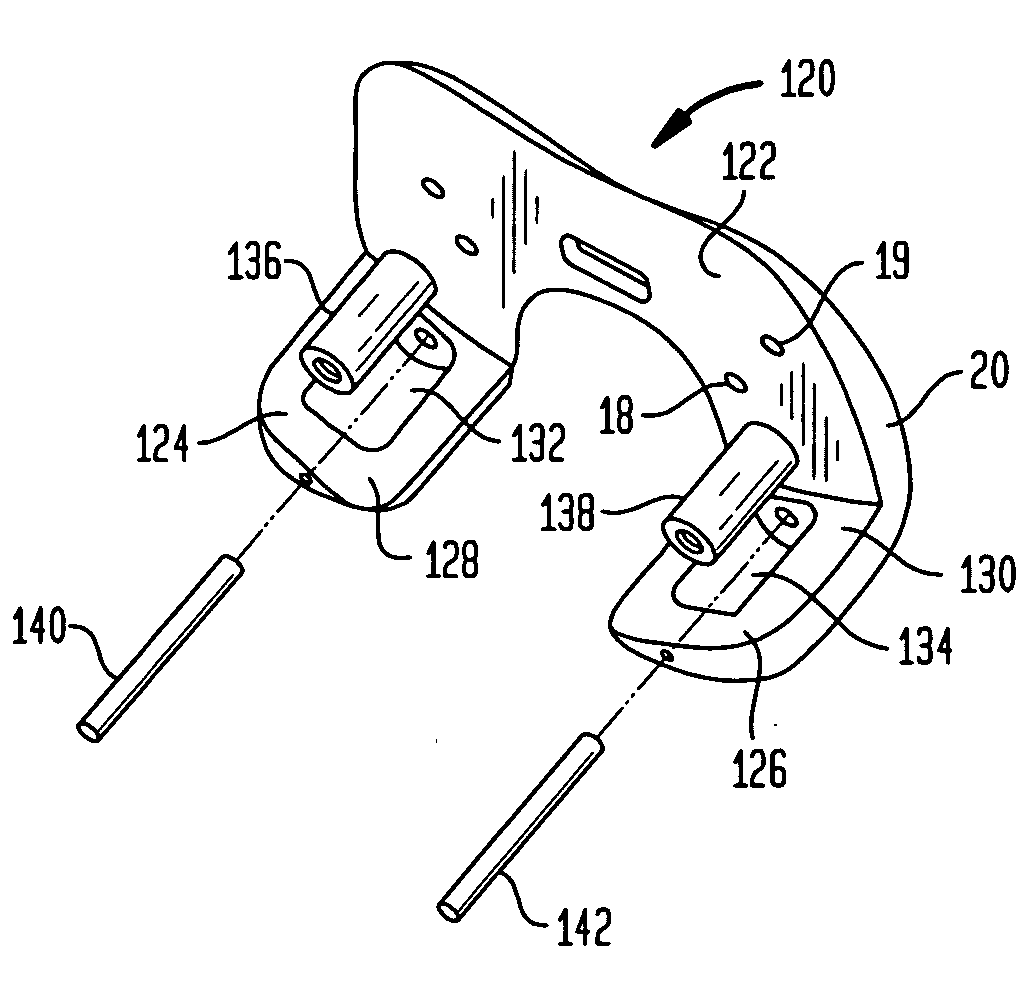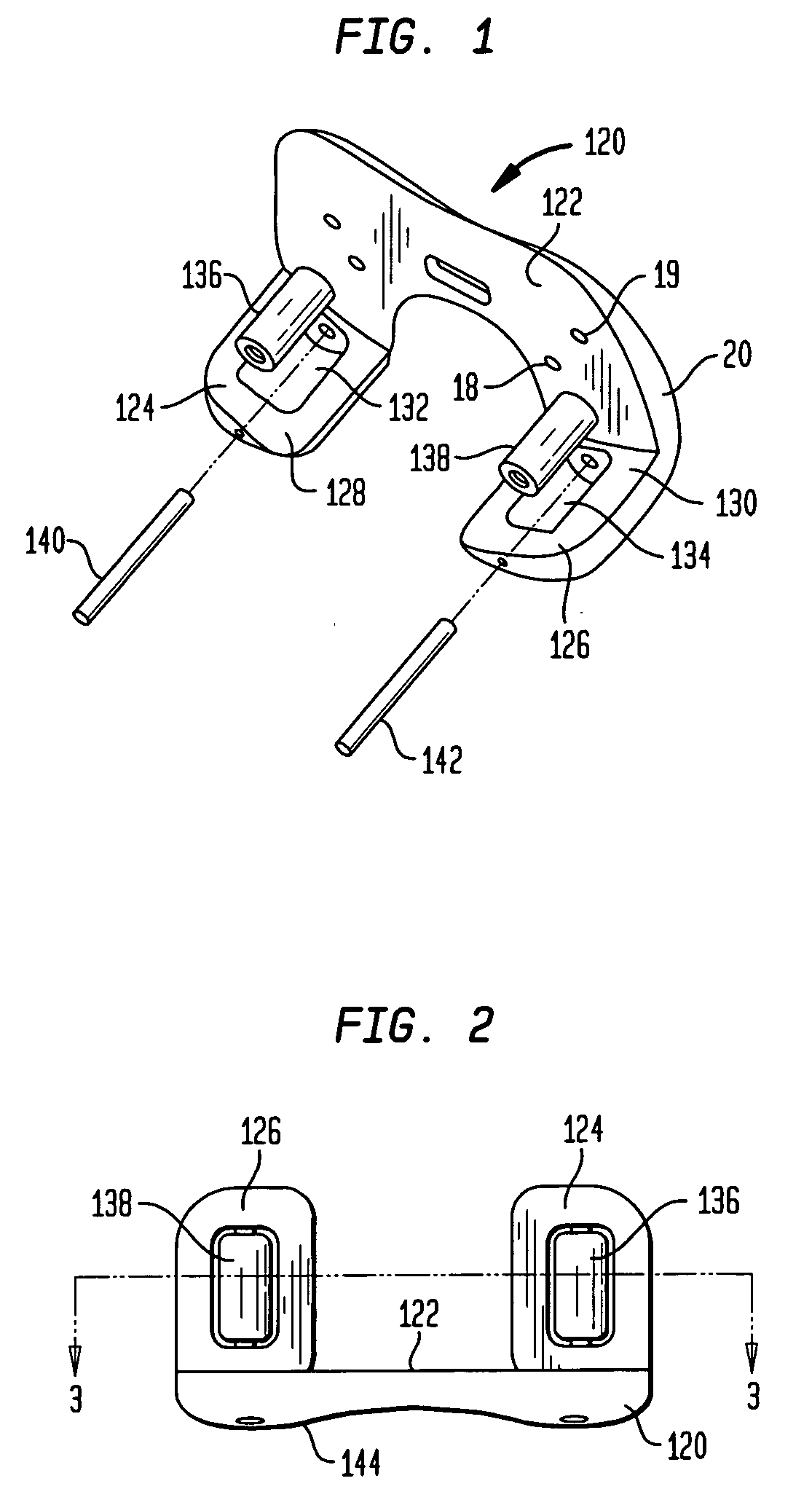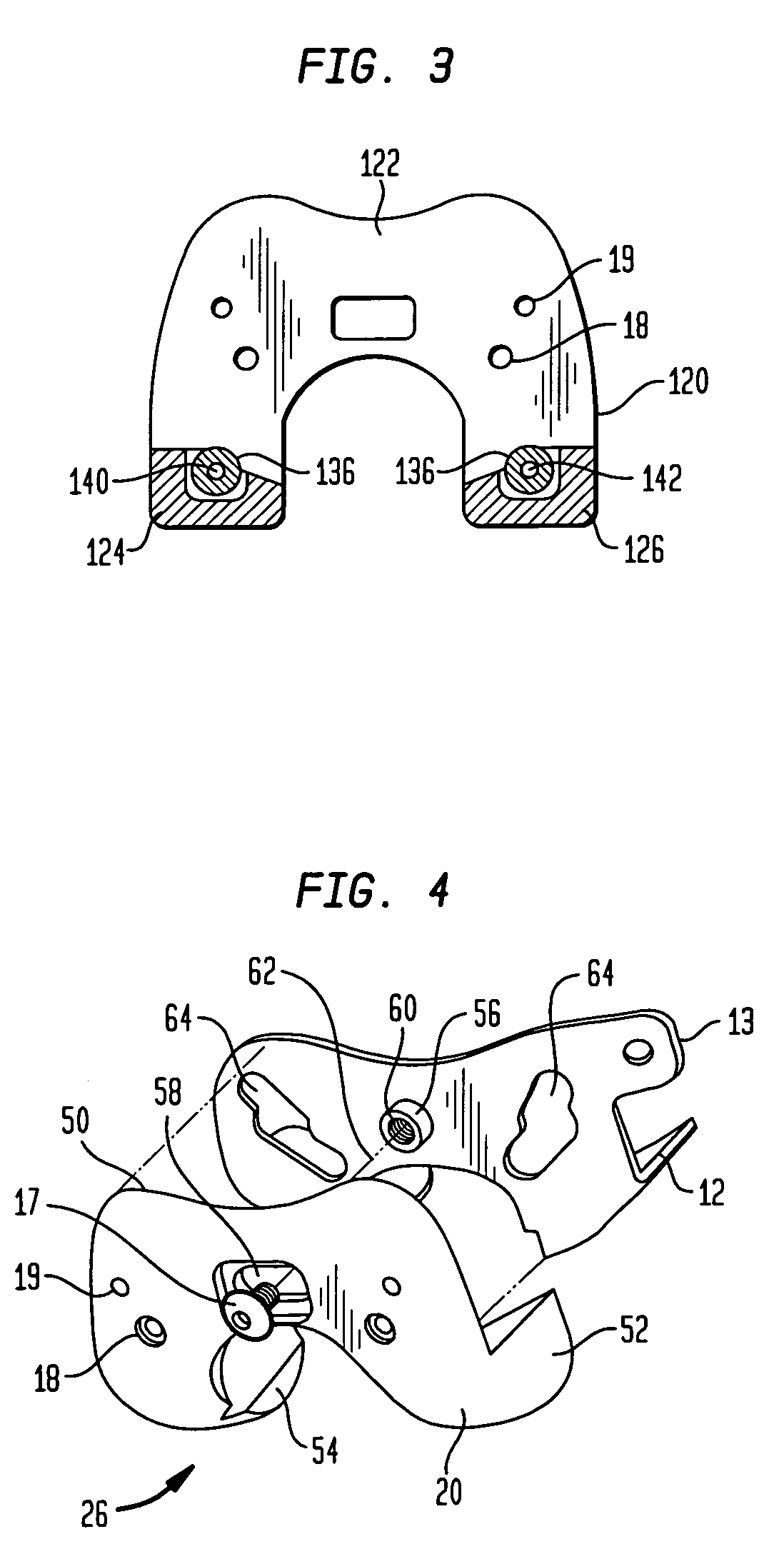Femoral component and instrumentation
a technology of femoral components and instruments, applied in the field of femoral components, can solve the problems of femoral and/or tibia, on-bone contact, significant pain and discomfort, etc., and achieve the effect of correct rotational alignmen
- Summary
- Abstract
- Description
- Claims
- Application Information
AI Technical Summary
Benefits of technology
Problems solved by technology
Method used
Image
Examples
Embodiment Construction
[0033]Referring to FIGS. 1-3, there is a first preferred one-piece embodiment of a femoral trial assembly generally denoted as 120. Femoral trial 120 includes a proximally facing surface 122 for contacting the resected distal surface of a femur. The femoral trial 120 has a pair of posterior condyles 124 and 126 which have curved anteriorly facing surfaces 128 and 130 respectively. The curved surfaces 128 and 130 are cylindrical surfaces each having a radius of 1.9 to 4 inches with a center located on or slightly offset from the center line of the distal femur. In the preferred embodiment a pair of recesses 132 and 134 are formed in the anterior surfaces 128 and 130 to receive roller bearings 136 and 138. Bearings 136 and 138 are held within recesses 130 and 132 by pins 140 and 142. Pins 140 and 142 provides the axes of rotation about which roller bearings 136 and 138 rotate. Surface 122 has a plurality of pin holes 19 therethrough to receive bone pins for mounting the trial on the d...
PUM
 Login to View More
Login to View More Abstract
Description
Claims
Application Information
 Login to View More
Login to View More - R&D
- Intellectual Property
- Life Sciences
- Materials
- Tech Scout
- Unparalleled Data Quality
- Higher Quality Content
- 60% Fewer Hallucinations
Browse by: Latest US Patents, China's latest patents, Technical Efficacy Thesaurus, Application Domain, Technology Topic, Popular Technical Reports.
© 2025 PatSnap. All rights reserved.Legal|Privacy policy|Modern Slavery Act Transparency Statement|Sitemap|About US| Contact US: help@patsnap.com



